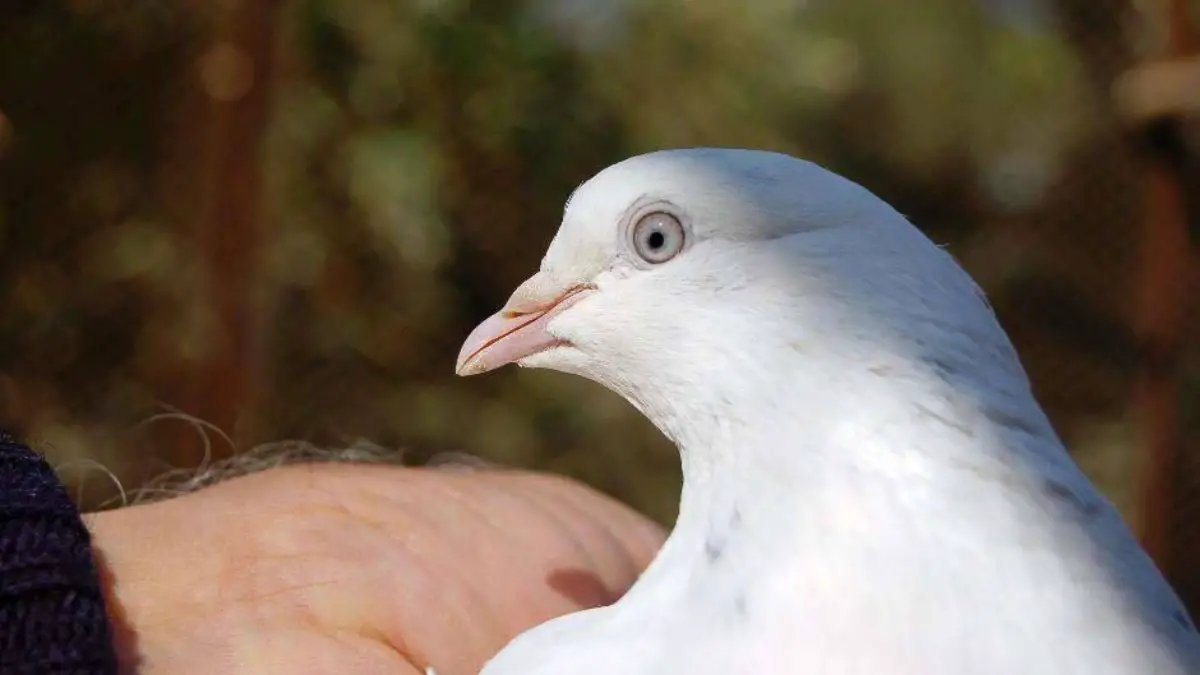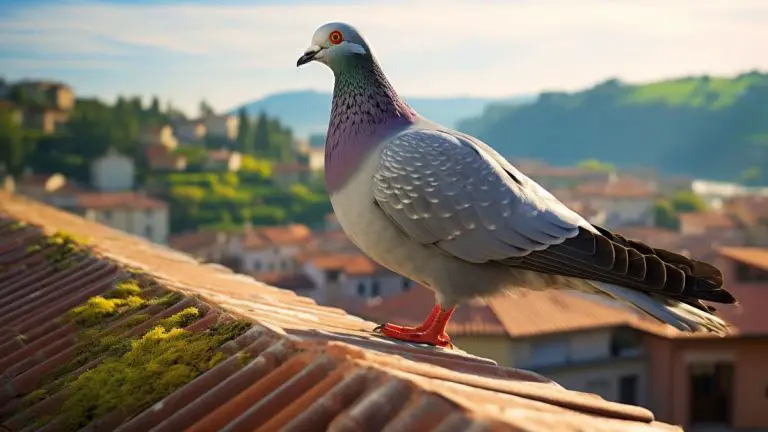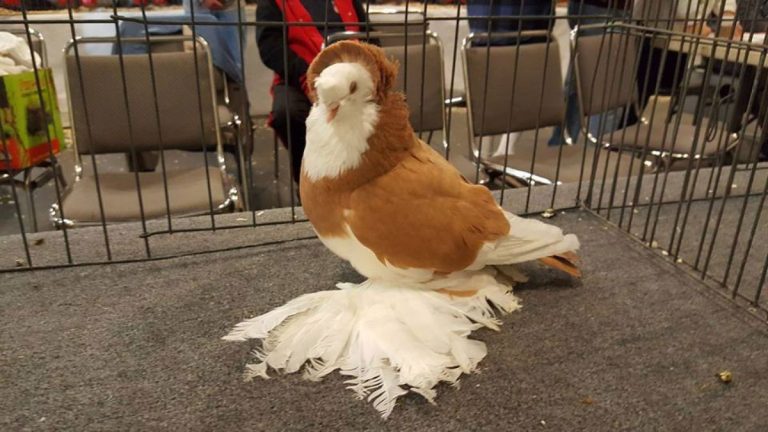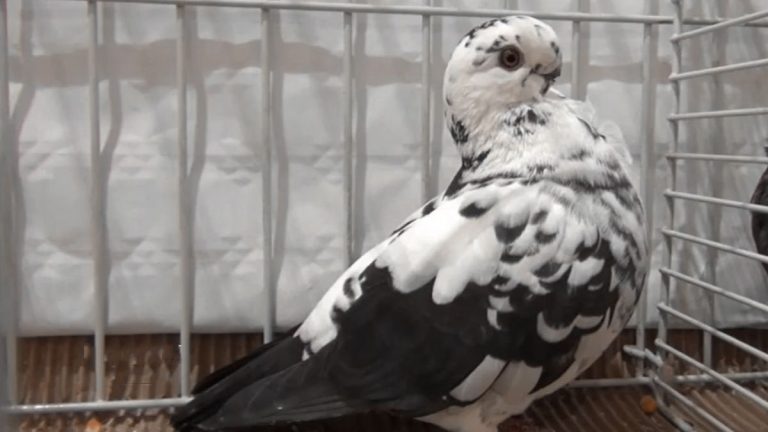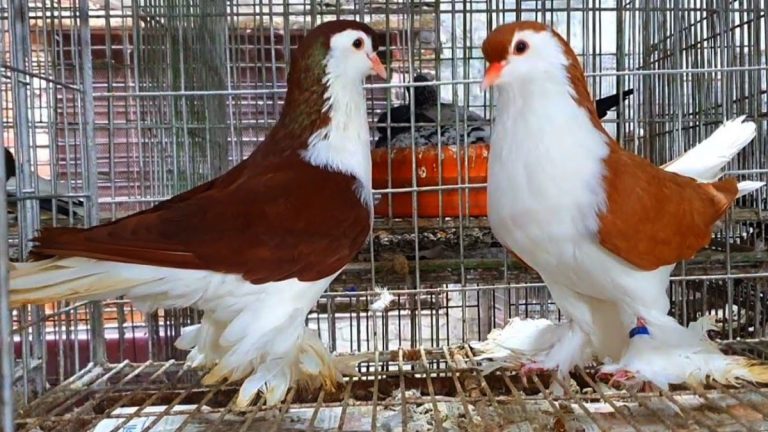Cumulet Pigeon: Origin, Appearance, Behavior, Care, And More
Cumulet pigeons are known for their sporting prowess and can fly for up to 14 hours non-stop! They’re great at rehoming (returning to their lofts) and rarely land on the wrong lofts or return after dark. The breed is also believed to be the ancestor of most modem high flying pigeon breeds, including English tipplers.
Below, you’ll discover more interesting details about these high flyer pigeons including their true origin and history, physical appearance, behavior and temperament, breed purpose, and breeding guide. We have also discussed the suitability of these birds as pets and how to take good care of them to keep them healthy.
Cumulet Pigeon Quick Facts:
| Scientific name | Columba livia domestica |
| Other names | Haut-volant Cumulet, Altovolante Cumulet, Cumulet Hochflieger |
| Breed name | Cumulet pigeon |
| Origin | Europe (Difference sources suggest the origin to be England, France, or Belgium) |
| Breed purpose | Racing, exhibition, pets |
| Size | Small to Medium |
| Weight | 300 to 400 grams |
| Flying ability | Excellent; can do short flight bursts |
| Cost | $50 and $200 |
| Lifespan | 10 to 15 years |
Origin and history
The exact origin of the Cumulet pigeon isn’t clear but it’s traceable to various countries in Europe.
Some sources say that the bird originated in Bulgaria while some argue that it may have come from Germany. Some early records also show that these birds were long used in Belgium.
Robert Fulton in his book, Illustrated book of pigeons, explains that the first time he encountered this breed was in Malines city of Belgium. You can click this document to get more details about the origin and history of this bird.
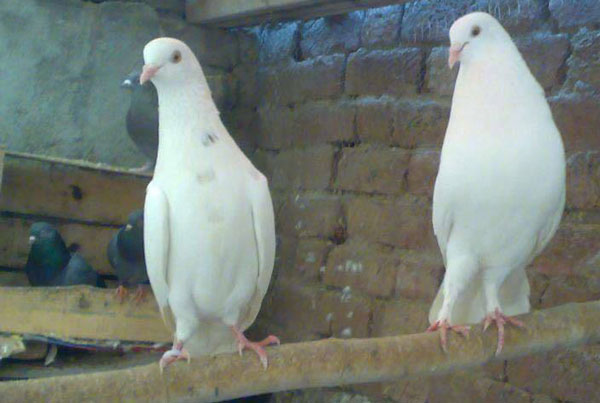
However, today the pigeon is regarded as an English breed. The breed didn’t become popular until after 1800s when they got highly prized for their excellent racing over short distances. The records show that the bird could do up to 14 hours of non-stop endurance flying in the air.
It’s believed that bird got its name from the cumulus clouds which are usually found in the skies at an altitude of around 600 to 2000 meters. This is simply one of the sky’s lower floors and is in reference to how high these birds usually take to the skies.
These pigeons are believed to be the ancestors of most of the high-flyer pigeon breeds known today. Examples include the English tipper, Cologne tumbler pigeon, and Belgian racing pigeon.
Appearance
Cumulet pigeon has pure white plumage which makes them easily recognizable from other breeds. Its medium-sized body is well-proportioned, giving it a quite sleek and beautiful appearance.
The eyes are opal/pearl and feature a white pupil and the cere has a flesh-pink appearance.
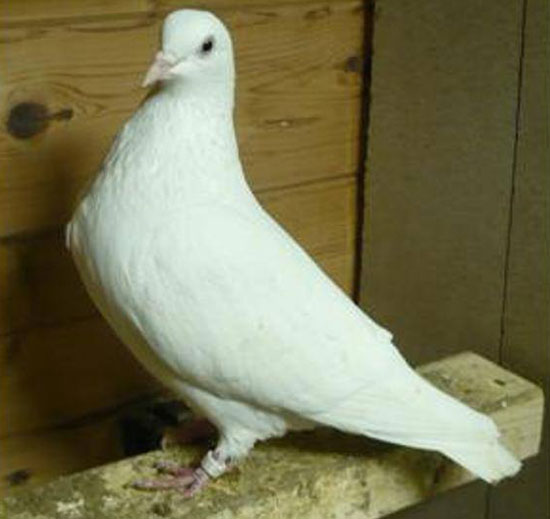
An adult Cumulet has an all-white plumage while the young birds may feature a yellow or red coloring on their beard, neck, or wingtips. However, these fade with molting and the birds eventually acquire an all-white appearance.
The bird’s legs and feet have pale red appearance and are not covered with feathers like in other breeds.
Behavior
Cumulet pigeons are generally calm and gentle temperament, something that endears them to pigeon fanciers and those interested in keeping them as pets.
However, the bids may act shy when around strangers.
These birds are also sociable in nature and will do well when kept in pairs or even small flocks.
They’re also social birds and don’t show aggressiveness toward other homers. In fact, most owners, usually house them together with other flying pigeons such as homes. And they even take wing together without any fights.
Keep in mind that these birds are also highly active and like flying. They make great flyers and are even capable of staying in the skies for 4 to 10 hours non-stop.
For this reason, you should house these birds in a loft and allow them to regularly fly in open spaces as opposed to keeping them inside their housing forever.
Here’s a video of Cumulet pigeons taking to the skies:
Video:
Diet
A domesticated Cumulet pigeon’s balanced diet should be comprised of a mix of a variety of seeds and grains (at least 6 varieties are recommended).
Alternatively, you can get pigeon pellets that come formulated to provide the birds with all the essential nutrients.
Besides, we advise you to supplement your pigeon’s diet with fresh vegetables and fruits to help ensure they obtain all the key nutrients.
Don’t forget that your pigeons also require a fresh and clean source of water every day to stay hydrated.
Cumulet pigeons as pets
Cumulets make good pets. But you must ensure you provide them with proper care to keep them happy and healthy. This simply includes suitable living conditions, proper, diet, and healthcare.
The ideal housing for these high flyers should be a loft. It should be spacious to allow your pigeons to freely move around and exercise and hence keep their body in good shape and prevent it from getting overweight.
It should also be safe from predators and weatherproofed to keep away harsh weather elements.
Clean the loft regularly to prevent the buildup of bacteria that may make your birds fall sick.
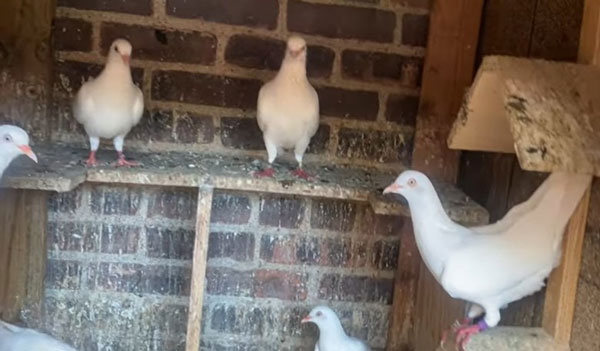
A proper diet is also important for the survival of these birds. This should include a mix of gains and seeds and then be supplemented with fresh veggies and fruits. Your pigeons will also require clean and fresh water.
Allow your birds to fly regularly. As we hinted earlier, these birds are great flyers. You should therefore let them out to fly in open space. They’re also good homers and with proper training, they can fly for hours and will eventually come back to their loft.
Cumulet pigeons may be easily susceptible to common health issues so, you should also schedule them for regular vet checkups and vaccines to keep them healthy and extend their lifespan.
Breeding
Cumulet pigeons are great breeders, just like most other domesticated pigeon breeds. If you’re interested in breeding them, then you should keep in mind a few guidelines for successful breeding.
Start by providing your pair with a suitable nesting box that’s situated in a safe area from predators and other birds. You can line up the nesting box with materials that are soft and comfortable e.g. hay, straw, and shredded paper.
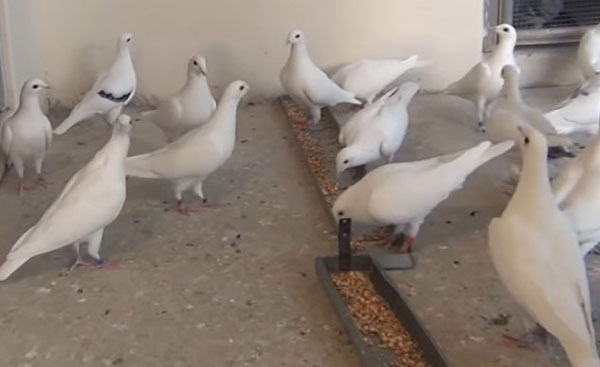
Cumulets typically kay 1-2 eggs at a time and they hatch after around 18 days. during this period, you ought to provide your pair with a nutritious diet as well as clean water.
When the eggs finally hatch, the parents will take care of the hatchlings for about 4-6 weeks. However, you should also closely monitor the chicks to ensure they grow healthily.
Cumulet pigeon price
The price of this pigeon can be anywhere from $50 all the way up to several hundred dollars.
However, the exact price of a given pigeon can be affected by a variety of factors including age, quality of the bird, location, and availability of the bird breeders.
High-quality birds from pedigrees that are known for excellent performance and endurance or birds with desired physical traits such as highly sought-after colors will also fetch more price.
If there are limited breeders in your location, they’ll also likely sell the birds at a higher price due to high demand.
Lifespan
The lifespan of a Cumulet pigeon is around 10 to 15 years. This is a pretty long lifespan and can be easily achieved if you give the bird proper care.

Providing your birds with a stimulating and healthy environment is one way to take good care of them.
Feeding them a healthy and balanced diet, and regular checkups by an experienced vet will also help keep the birds healthy and keep away diseases that may cut short their lifespan.
If you’re interested in learning about other unique breeds of pigeons, you might want to check out our articles on Chinese Owl pigeons and Antwerp Smerle pigeons. Our article on Chinese Owl pigeons explores the history, characteristics, and care requirements of these elegant and distinctive birds, including how to breed and raise them for show or as pets. Meanwhile, our article on Antwerp Smerle pigeons provides an in-depth look at the unique features and care requirements of these birds, including how to maintain their health and well-being.Final Verdict
Cumulet pigeons are fancy pigeons that serve as both exhibition and flying birds. Their excellent flying abilities and endurance enable them to take to the high skies for extended hours. They’re also known to be ancestors of most of the modern high-flyer pigeon breeds.
These birds also make great pets due to their calm, gentle, and friendly nature. They’re not demanding in terms of care and maintenance and just require proper housing, proper diet, and regular healthcare to stay happy and healthy. With proper care, these birds will give you companionship for up to a decade or more!
